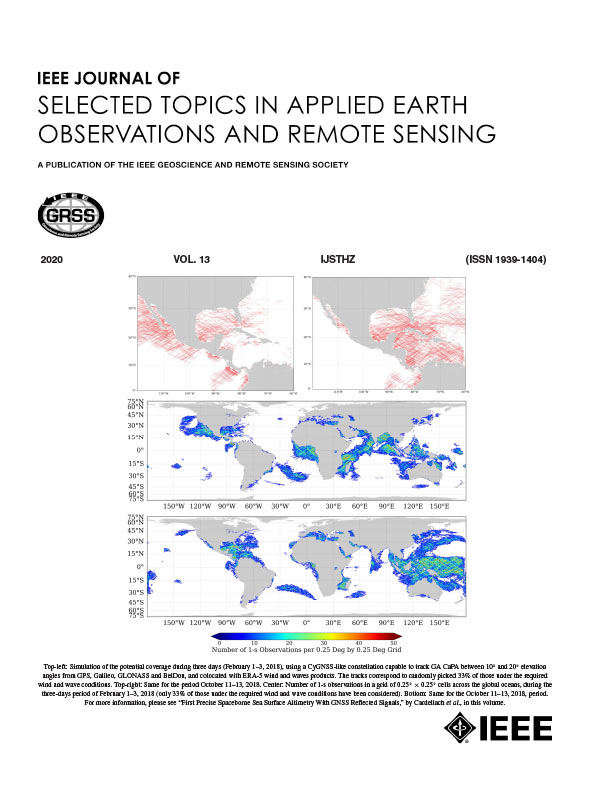利用背包式双激光雷达系统进行多传感器融合 SLAM 辅助林地绘图
IF 4.7
2区 地球科学
Q1 ENGINEERING, ELECTRICAL & ELECTRONIC
IEEE Journal of Selected Topics in Applied Earth Observations and Remote Sensing
Pub Date : 2024-09-05
DOI:10.1109/JSTARS.2024.3451175
引用次数: 0
摘要
森林垂直结构参数的提取在森林资源清查中起着至关重要的作用。近年来,光探测与测距(LiDAR)凭借其强大的三维重建能力在森林资源清查中得到了广泛应用。背负式激光扫描(BLS)是一种轻型激光雷达平台,可显著提高森林资源清查的效率和精度。针对全球导航卫星系统(GNSS)信号遮挡和树冠下激光雷达扫描盲区的问题,提出了一种多传感器融合同步定位与绘图(SLAM)算法,并建立了一种 BLS 设备。所提出的 SLAM 算法通过提取平面模型来融合水平和垂直激光雷达数据。此外,在森林测绘的特征点提取中加入了所提出的相似茎干特征。结果的准确性通过立树位置、胸径(DBH)和树高进行了验证。与其他经典 SLAM 方法相比,所提出的方法在立木提取方面达到了 100% 的准确率,在 DBH 提取方面减少了 85.56% 的误差(误差为 2.05 厘米),在树高提取方面减少了 83.44% 的误差(误差为 0.79 米)。结果表明,研究中提出的 SLAM 算法可以有效解决树冠下 GNSS 信号不佳的问题。此外,多传感器数据融合和茎干特征添加可以提供更完整的数据支持和更稳健的匹配约束,最终实现更精确的点云测绘。本文章由计算机程序翻译,如有差异,请以英文原文为准。
Multisensors Fusion SLAM-Aided Forest Plot Mapping With Backpack Dual-LiDAR System
The extraction of forest vertical structural parameters plays a crucial role in forest inventory. In recent years, light detection and ranging (LiDAR) has been widely applied in forest inventories due to its powerful 3-D reconstruction capabilities. The backpack laser scanning (BLS) is a lightweight LiDAR platform that significantly enhances the efficiency and accuracy of forest inventory. To address the issues of Global Navigation Satellite System (GNSS) signal occlusion and LiDAR scanning blind areas under the canopy, a multisensors fusion Simultaneous Localization and Mapping (SLAM) algorithm has been proposed, and a BLS device has been set up. The proposed SLAM algorithm fuses both horizontal and vertical LiDAR data by extracting the planar surface models. In addition, the proposed similar stem features are added to the feature point extraction in forest mapping. The accuracy of the results is validated through standing tree position, diameter at breast height (DBH) and tree height. When compared to other classic SLAM methods, the proposed method achieves 100% accuracy in standing tree extraction, reduces the error in DBH extraction by 85.56% (with an error of 2.05 cm), and decreases the error in tree height extraction by 83.44% (with an error of 0.79 m). The results show that the problem of poor GNSS under the canopy can be effectively addressed by the proposed SLAM algorithm in the study. Furthermore, multisensor data fusion and stem feature addition can provide more complete data support and more robust matching constraints, ultimately resulting in more accurate point cloud mapping.
求助全文
通过发布文献求助,成功后即可免费获取论文全文。
去求助
来源期刊
CiteScore
9.30
自引率
10.90%
发文量
563
审稿时长
4.7 months
期刊介绍:
The IEEE Journal of Selected Topics in Applied Earth Observations and Remote Sensing addresses the growing field of applications in Earth observations and remote sensing, and also provides a venue for the rapidly expanding special issues that are being sponsored by the IEEE Geosciences and Remote Sensing Society. The journal draws upon the experience of the highly successful “IEEE Transactions on Geoscience and Remote Sensing” and provide a complementary medium for the wide range of topics in applied earth observations. The ‘Applications’ areas encompasses the societal benefit areas of the Global Earth Observations Systems of Systems (GEOSS) program. Through deliberations over two years, ministers from 50 countries agreed to identify nine areas where Earth observation could positively impact the quality of life and health of their respective countries. Some of these are areas not traditionally addressed in the IEEE context. These include biodiversity, health and climate. Yet it is the skill sets of IEEE members, in areas such as observations, communications, computers, signal processing, standards and ocean engineering, that form the technical underpinnings of GEOSS. Thus, the Journal attracts a broad range of interests that serves both present members in new ways and expands the IEEE visibility into new areas.

 求助内容:
求助内容: 应助结果提醒方式:
应助结果提醒方式:


